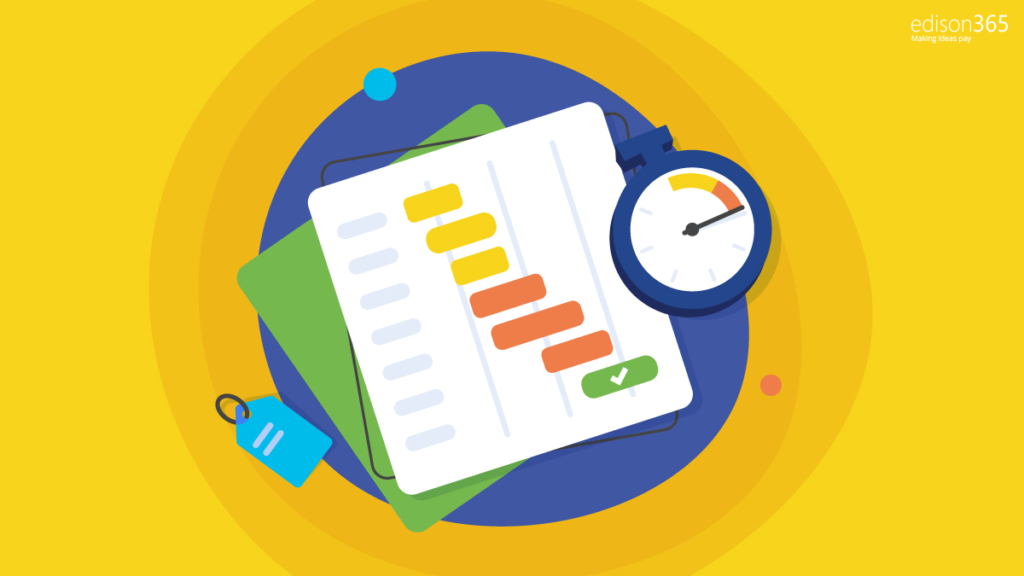Every innovation strategy, transformation strategy, change program, etc. needs to start from a foundation of awareness and desire. Those of you that know the ADKAR change management process will know this very well… it’s certainly one we like to follow with our customers here at edison365.
Once you have the first two ingredients (awareness and desire), the ADKAR model now tells you it is time to build some knowledge and ability within your organization to equip your people with the tools to make the change a lasting and successful one.
However, many organizations skip straight to training (aka. learning and support planning), even when the foundations of awareness and desire haven’t been set. This means that their people don’t even know why they are attending the training in the first place. This leads to frustration, confusion, and a whole lot of wasted time and money. Not good.
So I want to touch on some key questions about learning and support planning that you should be asking yourself, once you have built up awareness and desire to change. (If you want to see an example of ADKAR in action, check out our blog on moving to a 4-day week.)
1. What is your current learning and support process?
A question we should all be asking before we progress with or start on a new project. What do we already have? It’s surprising how the allure of something new and shiny blinkers those leading a change program to ignore the resources already at their disposal.
It’s a question I certainly ask each of my customers at the start of any learning and support planning workshop. I want to know their current approach to learning and support as an organization, the types of training they have, the audiences they include and reach out to, and the different methods they use.
It’s much better to tie into a structure and process that already exists. The main reason is that building on existing content saves time, but also you know what does and doesn’t currently work for the business. If it already works then your employees understand the method of learning and development; people know the format, people attend, people understand the importance of it. It saves you having to explain another new process and way of doing things.
Something I always tell my customers is that your project is already bringing about a lot of change, let’s not bring in more just for the sake of it.
Once you know what you have, understand what works and doesn’t, and plug any gaps in knowledge and approach with the additional learning and support that you need to bring into the business.
2. What are you trying to achieve with learning and support planning?
Bringing in a learning and support plan for the sake of it can be a huge source of frustration for a business. How many ‘pointless’ training courses have you been on?! For this reason, it is so important you understand the purpose of your learning and support plan.
The general perception of learning and support is that it must center around upskilling your staff or teaching them how to use a new piece of software. This is important, but it should not just be about the dry ‘how to’ process, use your new learning and support plan to bring in sessions that are different from the norm and have the simple purpose of inspiring your people to tap into a desired way of working or thinking.
Regardless of this, you need to ask yourself what reaction you are trying to provoke from the organization by creating this new learning and support content.
3. What’s the culture of learning like in your organization?
You need to know your organization and know what makes it tick. In particular, what resonates well with the people in your business.
You will have people from different backgrounds, different cultures, and those that have been educated differently. As such, you will have a blend of people who have different approaches and preferences in the way they learn.
It is for you to take your time to understand this, as well as the level of knowledge that already exists within your business. As an example, if you are bringing in new technology to a business that is technologically literate then your approach and training will be different from a business of technological laggards.
You also need to know who it is that you are targeting as well. So you know the demographic, you know the level of understanding and now you need to pinpoint who you are targeting and with which resources. If you are targeting the innovators and early adopters in your business then your training will be different from reaching the early and late majority, for example.
4. Which medium will you use for learning and support planning?
No one method of delivering your learning and support plan will work for everybody. Your organization will have different people who learn in different ways and will resonate with different delivery styles.
What I will say is don’t be afraid to use the same content in different mediums. Why not hold in-person workshops that you then record and share? Better still, break up that workshop into bite-sized chunks to appease those that learn better through sound bites. You could also take the transcript from these videos and create training brochures that people can read, or posters.
You see that using some intuition, you can create a number of different pieces of training content that will resonate with a number of different people in different ways.
Look at the current methods of training delivery within your organization and copy what works well. I’d also recommend trying something a little different to ensure your project stands out from the crowd and isn’t just another boring training session.
In short, start with what you and the organization know and experiment with many different styles. The more bases you cover the more likely your message will reach its intended targets.
One final point I would make. Whatever you do, make it memorable. Make it different. Make it sticky.
5. What’s the frequency of learning and support?
Like the medium you use, the frequency of learning and support won’t suit everyone so you need to mix it up and cover all angles.
You need to have a constant flow of learning and support, whether that is on-demand content or frequent, fresh learnings. Play around with format and frequency and don’t be afraid to repeat yourself.
One key recommendation about frequency is to try and find a way of always being on with your learning and support – particularly your support. Your project will be asking people to embrace new ways of doing things and they will be trying things that are alien to them. As they are taking their time out to buy into your project then you need to reciprocate by being there when they ask questions. You need to be seen as being that change program that is there for the people to support them and allow them to grow.
Yammer, part of the Microsoft 365 suite, is a great way of building this ‘always-on’ content. It gives you the ability to create a community and network of support around your strategy.
What does good look like?
By taking all of the above into account you need to set out from the outset what good learning and support planning looks like.
Greater knowledge? Greater uptake? New ways of working? More support being shared that isn’t directly from your project?
Define this, monitor this, and report against this. More than any aspect of your change program, learning and support will zap time, budget, and energy, so it is vital you keep learning from wins and losses and keep improving. Respond to your people’s needs.
FAQs: Learning and Support Planning
How do you measure learning and support success?
When measuring the success of learning and support, it’s a good idea to pick and goal and work back from there. Then determine the criteria for succeeding in that goal.
So, if – for example – your goal is to improve data governance by offering training on a new sales tool, then your measure of success could be the number of people using that tool.
Why are learning and support important in business?
Developing your employees is essential for retaining top talent. In fact, 93% of employees say they’ll stay longer at a company that develops their career. Development schemes, such as mentoring, can also help to improve employee engagement.




